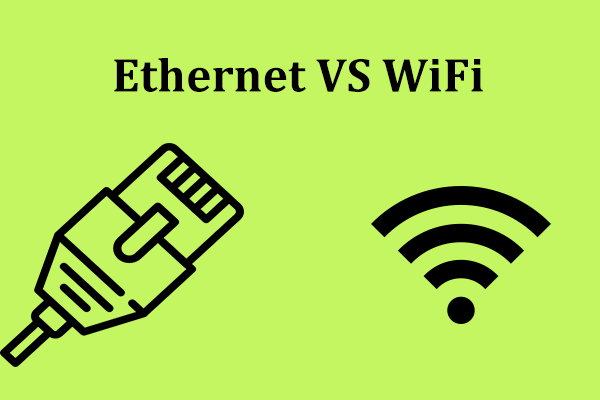What Is Ethernet & Why Use It & How Does It Work? [MiniTool Wiki]
What Is Ethernet
What is ethernet? Ethernet is a traditional technology used to connect devices in a wired local area network (LAN) or wide area network (WAN), enabling them to communicate with each other through a protocol (a set of rules or a common network language).
Ethernet describes how network devices format and transmit data so that other devices on the same LAN or campus network segment can identify, receive, and process information. An Ethernet cable is the physical, enclosed wiring over which data passes.
Why Use Ethernet?
Why use ethernet? Ethernet is used to connect devices in the network and is still a popular form of network connection. For local networks used by specific organizations (such as corporate offices, school campuses, and hospitals), Ethernet is used for its high speed, security, and reliability.
Ethernet was initially popular because of its low price. With the development of network technology, Ethernet can continuously develop and provide higher performance levels, while maintaining backward compatibility, thus ensuring the continued popularity of Ethernet.
Types of Ethernet
There are 3 types of Ethernet - Fast Ethernet, Gigabit Ethernet, and Switched Ethernet. The following is detailed information about them.
Fast Ethernet
This is a type of Ethernet that can transmit data at a rate of 100 Mbps through twisted-pair cables or optical cables. Data can be transmitted from 10 Mbps to 100 Mbps without protocol conversion or application and network software changes.
Gigabit Ethernet
Gigabit Ethernet is a type of Ethernet that can transmit data at a rate of 1000 Mbps based on twisted-pair cables or optical cables. Among other types of Ethernet cables, this is the most popular one.
Switched Ethernet
This is a network device required by multiple network devices in a local area network. When using this type of cable, a regular network cable should be used instead of a crossover cable. The Ethernet cable forwards data from one device to another device with the same network.
Generally, this supports different data transfer rates. Since the cost of such a network is not too high, Ethernet is widely used as a network technology
How Does Ethernet Work
Xerox engineers first developed Ethernet in the 1970s. Ethernet originally ran through coaxial cables. Today, typical Ethernet LANs use special grade twisted-pair cables or fiber optic cables. Early Ethernet connected multiple devices to the network segment through a daisy chain or star topology through a hub (a layer 1 device responsible for transmitting network data).
However, if two devices sharing a hub try to transmit data at the same time, the data packets may collide and cause connection problems. To alleviate these digital traffic jams, IEEE has developed the Carrier Sense Multiple Access (CSMA/CD) protocol with collision detection, which allows devices to check whether a given line is in use before starting a new transmission.
Pros and Cons of Ethernet
Now, let’s see the pros and cons of Ethernet.
Pros
- The cost is relatively low
- Backward compatible
- General anti-noise
- Good data transmission quality
- Reliability
- Data security
Cons
- It is suitable for smaller and shorter distance networks.
- Liquidity is limited.
- Using longer cables will cause crosstalk.
- It is not suitable for real-time or interactive applications.
- The increase in traffic slows down the Ethernet speed.
- The receiver does not confirm the receipt of the data packet.
- When troubleshooting, it is difficult to trace the specific cable or node that caused the problem.
Internet VS Ethernet
Both Ethernet and Internet allow computers to connect and communicate with each other. However, there are significant differences between them, as described below.
In terms of connection range, the Internet is more extensive. Ethernet runs mainly on LAN. At the same time, the Internet interconnects the computers in the WAN, and the WAN covers almost the entire world.
Ethernet and the Internet are also different in terms of network management. Ethernet can have two or more administrators, depending on its size. At the same time, the administrator can only control and manage a small part of the Internet, and no one can control the entire network.
Because of the small size of Ethernet, compared with the Internet, the security of Ethernet is much easier. No one outside the Ethernet can access the network, causing harm to its users.
Final Words
To sum up, here is all information about “what is Ethernet”. I hope this post can be helpful to you.
